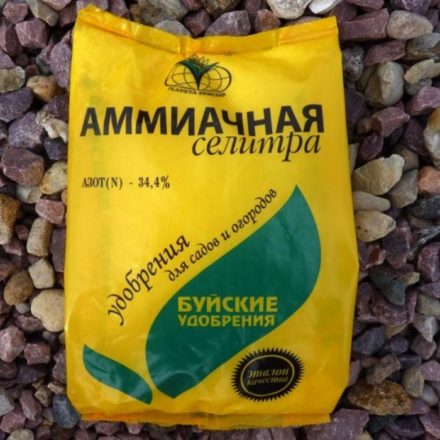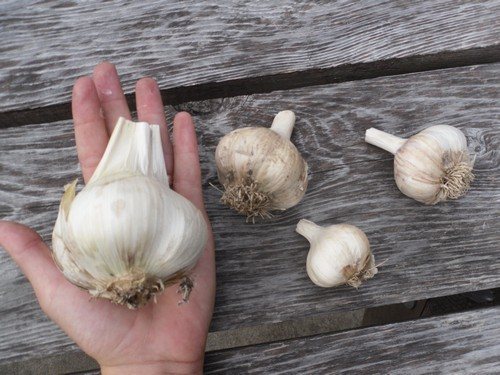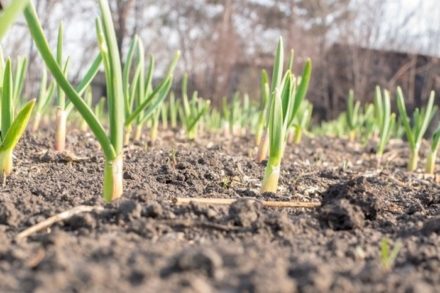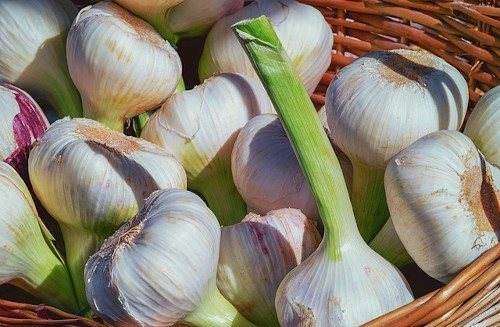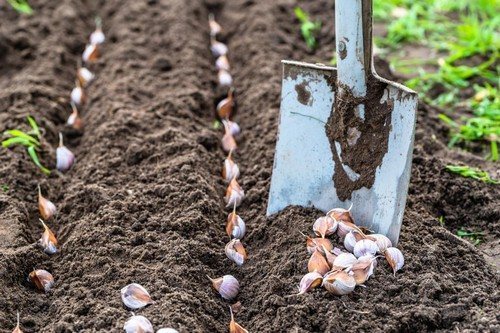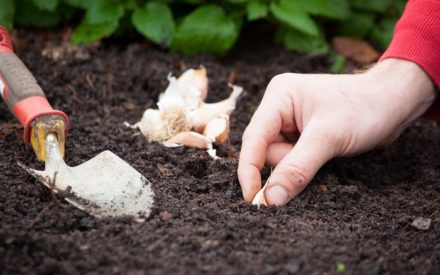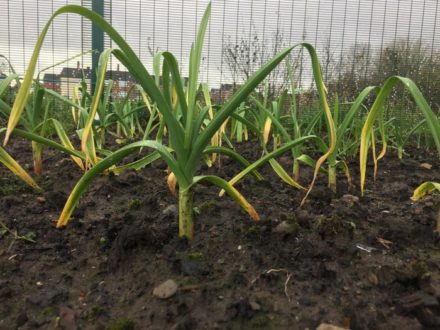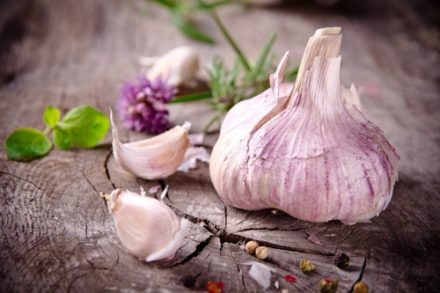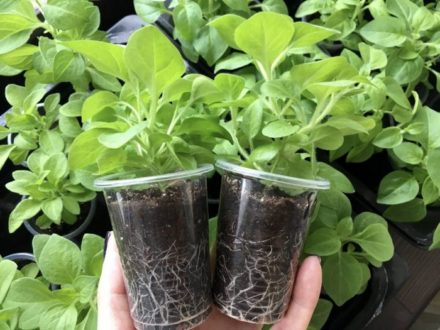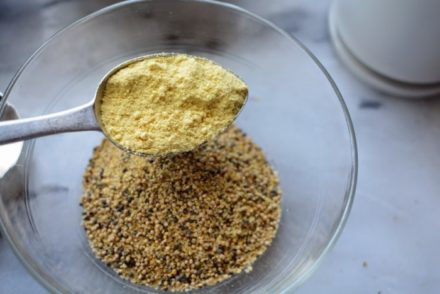For vegetable crops, ammonium nitrate is one of the best sources of nitrogen. This fertilizer is also suitable for garlic. Fertilizer can be applied either dry or dissolved. Nitrogen entering the soil from nitrate is easily absorbed by plant roots and promotes the rapid growth of green mass. In order for fertilizing to be effective, it is carried out according to certain rules.
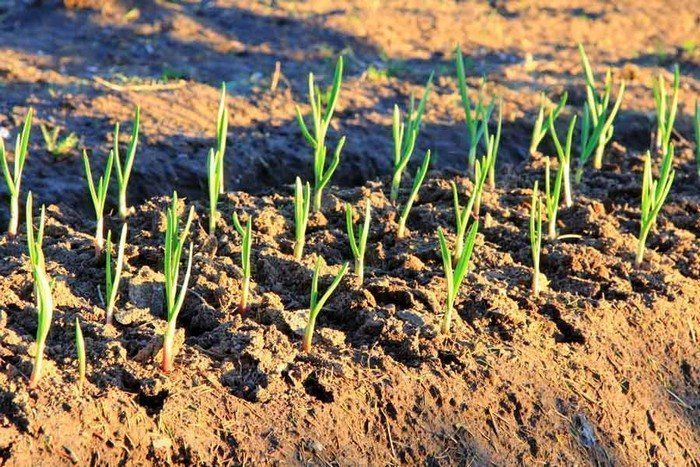
Timing of spring fertilizing with saltpeter
The timing of fertilizing with ammonium nitrate (ammonium nitrate, ammonium salt of nitric acid) depends on the time of planting the garlic itself. What to follow when processing plantings:
- For winter varieties of garlic, fertilizer is applied in early spring, scattering granules on the snow. As soon as the remnants of the snow mass melt, the granules will dissolve and penetrate into the ground along with the melt water. This type of fertilizing is usually used on poor soils.
- You can do it differently - organize root feeding with ammonium nitrate solution after the mass emergence of seedlings. The nutrient solution will need to be added 2 weeks after greenery appears in the garden bed.
- When planting spring varieties of garlic, fertilizer is placed in the planting holes along with superphosphate, potassium salt and compost.
- Both spring and winter garlic can be fertilized by pouring granules into the grooves located between the rows. The fertilizer should reach a depth of 3 cm. After this, the plantings are watered.Such feeding should be organized 3 weeks after the first garlic leaves emerge.
If the crop is growing poorly, the seedlings are stunted, the leaves are faded in color, you can apply foliar feeding - it will have an emergency effect.
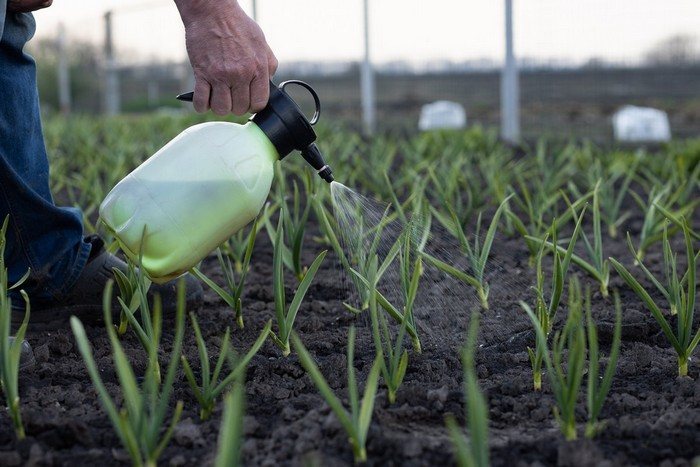
Combination with other fertilizers
Ammonium nitrate can be applied as part of a complex fertilizer, combining fertilizer with superphosphate and potassium sulfate. In this case, the garlic will receive all the necessary substances for its development.
But ammonium nitrate cannot be mixed with wood ash due to an undesirable chemical reaction. The substances interact with each other, the reaction is accompanied by the release of ammonia. The result is a loss of nitrogen. In the same way, ammonium nitrate interacts with lime.
Ammonium salt goes well with phosphate rock. The mixture can be prepared in advance and stored. The same can be said about potassium chloride, potassium sulfate, and urea. These fertilizers are also suitable for mixing with ammonium nitrate.
Features of application
It is beneficial to use ammonium nitrate for garlic. The fertilizer is inexpensive, can quickly eliminate nitrogen starvation, is easy to use, and dissolves well in the soil. However, ammonium nitrate also has some disadvantages.
The chemical is quickly washed out of the soil after application. After some time, fertilizing will need to be repeated. Ammonium nitrate should be applied strictly in the specified dosage. Otherwise, the soil structure is disrupted and its acidity increases, which entails a decrease in garlic yield.
According to the manufacturer's recommendations, fertilizer is applied in an amount of 5-7 g per 1 square meter. m in dry form. The granules are embedded in the top layer of soil, after which abundant watering is carried out. To prepare the solution you will need 20 g of ammonium nitrate per 10 liters of water.
To reduce the acidity of the soil, after applying ammonium sulfate in the second half of the growing season, garlic is fertilized with wood ash. The ash will not only feed the plants, but will also act as a deoxidizer.
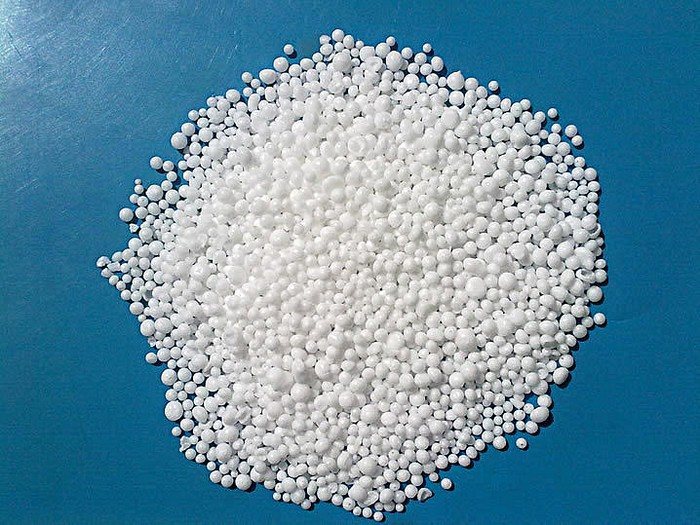
Ammonium nitrate is perfect for spring feeding of garlic, stimulating the growth of greenery. Later, the culture will need phosphorus and potassium compounds to form large and dense heads. When applying fertilizers, you need to take into account their compatibility and strictly follow the dosage. An increased concentration of chemicals will only harm garlic.


